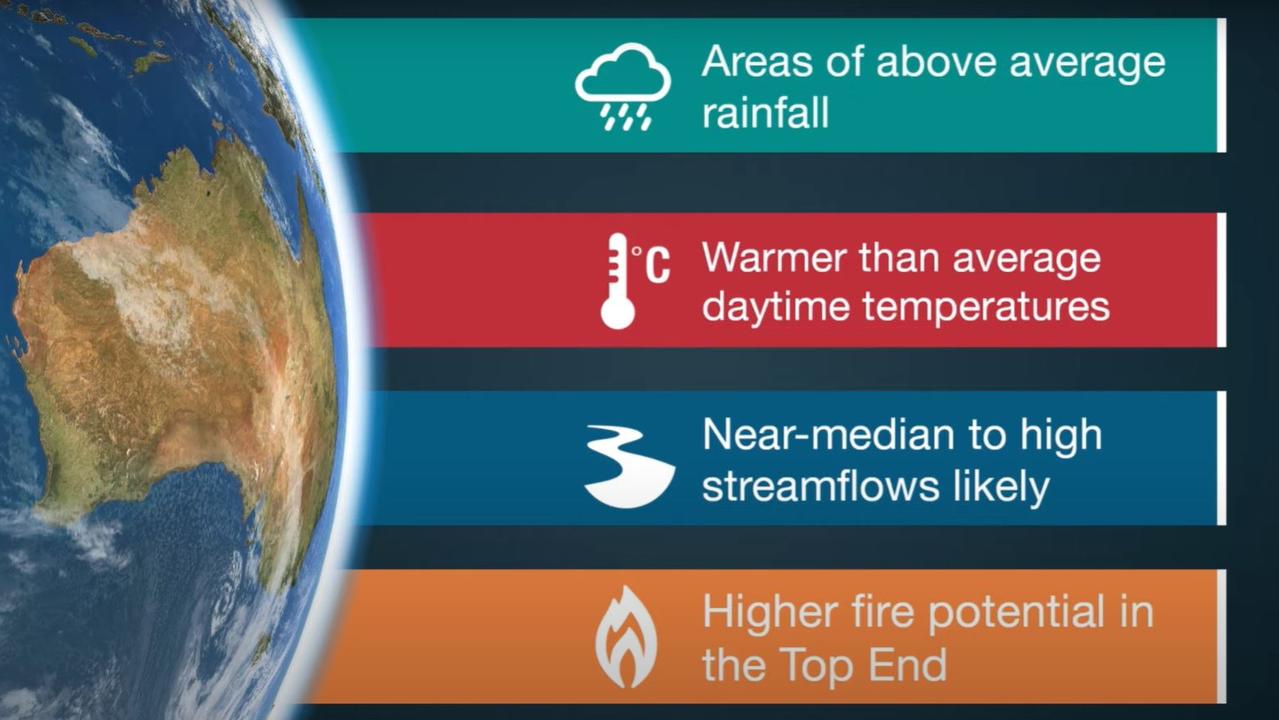Australia’s winter weather outlook: Warmer but wetter season ahead
Metrologists have said Australia could see some weird weather over winter – La Nina is in retreat and that’s let another climate drive jump in.

Winter is upon us so it’s time to bring out the big scarf, the beanie and generally rug up warm.
Or is it? This winter, that might not be the case.
If your idea of a perfect chilly season is cosy nights under a blanket, seeking out roaring fireplaces and a smattering of snow away from the slopes, then it’s bad news.
The Bureau of Meteorology (BOM) has said winter 2021 is likely to be warmer across much of Australia, including the capitals. There could even been a risk of bushfires in some areas.
It’s part of a warming trend that’s spanned the last two decades.
But there is a surprise in the works. One of Australia’s biggest climate drivers has retreated back to neutral and that means unusually warm waters north of the country could have a much greater impact. Expect increased rainfall through the winter months – that’s very good news for those in areas that have suffered from prolonged drying.

Australia’s cold autumn
Looking back, autumn was the coldest in Australia since 2015.
“Cool conditions would have been felt particularly keenly by residents in inland NSW, who recorded minimum temperatures one to two degrees below average,” BOM climatologist Dr Lynette Bettio said.
It was wet too, with NSW and southern Queensland seeing deadly and devastating floods.
“NSW had its second wettest March on record, with the extreme rainfall and severe flooding late in the month,” she said.
That’s meant water storage is generally in good nick with the Murray Darling basin storages 20 per cent higher than this time last year.
However, much of southern Australia missed the heaviest rains. In parts of Victoria, Tasmania and South Australia, soil moisture levels are below average.

What’s leading to a wetter winter?
The La Nina climate driver, which helped drench much of the east, is now way back in the rear view mirror.
“Our climate drivers are currently neutral, meaning we’re not getting El Nino or La Nina bringing particularly dry nor particularly wet conditions to the continent,” Dr Bettio said.
Therefore, other factors, like warm waters off Australia’s north coast, could have a much bigger effect than might happen in a usual winter.
“That could result in a wetter than average dry season across much of northern Australia but as it is dry season, rainfall totals will not be high,” she said.
The moisture from the north could funnel its way down through the continent.
June to August should see above average rainfall across the Northern Territory, SA, Queensland and NSW. Winter is usually the driest season of the year away from tropical areas.
More average conditions or even drier weather is a distinct possibility for Victoria, Tasmania and Western Australia away from the tropical north.


Dr Bettio said this was consistent with observations from the past 20 years, which showed a trend towards drier than average conditions in Australia’s south during autumn and early winter.
BOM data shows that cool season rainfall has been on the decline in the southwest and southeast for 17 of the last 20 years by about 12 per cent. But in the north, rainfall has increased.
This is partly blamed on climate change.
“Climate change is playing a role in drying out winters in the southeast,” Dr James Goldie from the Monash University Climate Change Communication Research Hub told news.com.au.
“It’s not the only thing influencing our rainfall, but we should be prepared for the possibility of more dry years ahead.”
A generous wet season in the NT has resulted in a significant vegetation growth. That means there is an increased fire risk for areas around Darwin during the dry season.

Warmer than average weather from June to August
Temperature-wise, winter is likely to be warmer than usual for northern Australia, southern WA, populated SA, Victoria, Tasmania and much of NSW.
Elsewhere, including Queensland and most of the outback, winter temperatures should be average.
It’s unlikely the mercury will plummet overnight either – just about the entire country can expect warmer than average minimums.
It’s still winter – it’s still going to be brisk. But maybe that super-cosy scarf can stay in the wardrobe.




